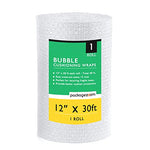You have no items in your shopping cart.
Welcome to the ultimate guide on how to "keep it green"! In this comprehensive article, we will explore various ways to embrace sustainable living and make environmentally conscious choices. From reducing waste to conserving energy and supporting eco-friendly practices, we'll cover it all. So, let's dive right in and discover how we can all contribute to a greener and more sustainable world!
Understanding "Keep It Green" - Promoting Environmental Stewardship
Before we delve into the practical tips, let's understand what "keep it green" truly means. At its core, "keep it green" encourages us to adopt practices that support the well-being of our planet. It's about making conscious choices that have a positive impact on the environment and minimize harm. By "keeping it green," we aim to preserve natural resources, reduce waste, and promote sustainable living for the benefit of future generations.
Eco-Friendly Home - Nurturing a Green Living Space
Creating an eco-friendly home doesn't have to be overwhelming. Here are some easy steps to "keep it green" within your living space:
-
Energy-Efficient Lighting - Switch to LED bulbs and remember to turn off lights when not in use.
-
Green Appliances - Opt for energy-efficient appliances with an Energy Star rating.
-
Proper Insulation - Insulate your home properly to maintain a consistent temperature and reduce the need for heating or cooling.
-
Rainwater Harvesting - Collect rainwater for gardening and non-potable uses to reduce water waste.
-
Solar Power - Consider installing solar panels to harness clean and renewable energy.
-
Composting - Set up a composting system for kitchen waste, creating nutrient-rich soil for your garden.
-
Natural Cleaning Products - Choose eco-friendly cleaning products free from harmful chemicals.
Sustainable Transportation - Green Commuting Options
Transportation is a major contributor to greenhouse gas emissions. Here are some eco-friendly transportation alternatives:
-
Carpooling and Ridesharing - Share rides with colleagues or friends to reduce the number of vehicles on the road.
-
Public Transport - Utilize buses, trains, or subways whenever possible to lower your carbon footprint.
-
Cycling - Embrace cycling for short distances, promoting both eco-friendly commuting and physical well-being.
-
Electric Vehicles (EVs) - Consider switching to an electric vehicle, producing zero tailpipe emissions.
-
Telecommuting - Work from home occasionally to reduce daily commuting and associated emissions.
Green Eating - Nourishing Your Body and the Planet
Our dietary choices can significantly impact the environment. Embrace a "keep it green" approach to eating with these tips:
-
Plant-Based Diets - Incorporate more plant-based meals into your diet for a lower environmental impact.
-
Organic and Local Produce - Support local farmers and reduce transportation emissions by choosing organic and locally sourced fruits and vegetables.
-
Reduce Food Waste - Plan meals, store food properly, and compost leftovers to minimize food waste.
-
Sustainable Seafood - Choose sustainably sourced seafood options to protect marine ecosystems.
-
Avoid Single-Use Plastics - Say no to single-use plastic packaging and opt for reusable containers and bags.
Eco-Friendly Fashion - Dressing Responsibly
The fashion industry has a significant environmental impact. Embrace eco-conscious choices to "keep it green" in fashion:
-
Sustainable Fabrics - Opt for clothing made from organic cotton, hemp, or bamboo for a lower environmental footprint.
-
Secondhand Shopping - Explore thrift stores and vintage shops to extend the life of clothing and reduce demand for new items.
-
Quality Over Quantity - Invest in well-made, timeless pieces that last longer, reducing the need for constant replacements.
-
Eco-Friendly Brands - Support fashion brands prioritizing sustainability and ethical practices.
-
Clothing Care - Wash clothes in cold water and air-dry them to conserve energy.
Zero Waste Lifestyle - Minimizing Waste for a Greener World
Adopting a zero waste lifestyle means striving to produce as little waste as possible. Here's how to "keep it green" with minimal waste:
-
Refuse Single-Use Items - Say no to disposable items like plastic straws, utensils, and takeout containers.
-
Reuse and Repurpose - Get creative with items you already own and find new purposes for them.
-
Bulk Buying - Purchase items in bulk to reduce excessive packaging and save money.
-
Composting - Compost kitchen scraps and yard waste to create nutrient-rich soil and minimize landfill waste.
-
Upcycling - Transform old or damaged items into something new and useful.
Green Gardening - Growing Your Own Greens
Having a green garden not only beautifies your surroundings but also contributes to a healthier planet. Here's how to "keep it green" while gardening:
-
Native Plants - Choose native plants for your garden, as they require less water and are better suited to the local climate.
-
Rainwater Harvesting - Collect rainwater to water your plants, reducing the need for tap water.
-
Composting - Use compost as natural fertilizer to nourish your plants and improve soil health.
-
Avoid Harmful Chemicals - Opt for organic pest control methods and avoid chemical-laden fertilizers.
-
Attract Beneficial Insects - Encourage the presence of beneficial insects that help control garden pests naturally.
Energy Conservation - Powering Your Life Sustainably
Conserving energy is essential for both the environment and your wallet. Here are some energy-saving tips to "keep it green":
-
Unplug Devices - Unplug chargers and electronics when not in use to prevent phantom energy consumption.
-
Energy-Efficient Appliances - Invest in energy-efficient appliances that have lower power consumption.
-
Smart Thermostats - Use smart thermostats to regulate home temperatures efficiently.
-
Natural Lighting - Make use of natural light during the day to reduce the need for artificial lighting.
-
Power Strips - Connect multiple devices to power strips that can be easily turned off when not needed.
Eco-Tourism - Traveling Responsibly
Traveling is an excellent opportunity to explore the world while supporting eco-friendly practices. Here's how to "keep it green" while traveling:
-
Sustainable Accommodations - Choose eco-friendly hotels or lodges that follow sustainable practices.
-
Local Experiences - Opt for local tours and experiences to support the community and reduce your travel footprint.
-
Public Transportation - Use public transport or walk whenever possible to explore your destination.
-
Eco-Friendly Souvenirs - Choose souvenirs made from sustainable materials or support local artisans.
-
Leave No Trace - Respect the environment by not leaving any trash or damaging natural attractions.
Sustainable Technology - Minimizing Electronic Waste
As technology evolves rapidly, electronic waste becomes a growing concern. Here's how to "keep it green" with your electronic devices:
-
Responsible Disposal - Recycle or donate old electronic devices to reduce e-waste.
-
Sustainable Gadgets - Choose electronics made from eco-friendly materials and designed for longevity.
-
Energy-Saving Settings - Adjust your device settings to conserve battery life and reduce power consumption.
-
Eco-Conscious Brands - Support tech companies that prioritize sustainability and environmental responsibility.
-
Repair Instead of Replace - Whenever possible, repair broken devices rather than replacing them.
FAQs
Q: Why is sustainable living important?
A: Sustainable living is crucial to protect the environment, conserve resources, and ensure a better future for generations to come. By making eco-friendly choices, we can reduce our ecological footprint and mitigate the impact of climate change.
Q: Can I make a difference as an individual?
A: Absolutely! Every small eco-friendly choice you make contributes to the larger effort of promoting sustainability. Individual actions collectively create a significant impact on the environment.
Q: Is sustainable living expensive?
A: While some eco-friendly products and practices may have higher upfront costs, sustainable living can actually save money in the long run. Energy-efficient appliances, for example, reduce utility bills, and making fewer purchases reduces overall expenses.
Q: How can I encourage others to "keep it green"?
A: Lead by example and share your sustainable living journey with friends and family. Educate others about the benefits of eco-friendly choices and the positive impact they have on the environment.
Q: Is sustainable living only about environmental concerns?
A: While environmental concerns are a significant aspect of sustainable living, it also encompasses social and economic aspects. Sustainable practices aim to ensure a balance between the well-being of people, the planet, and prosperity.
Conclusion
By "keeping it green," we play an active role in preserving the beauty and resources of our planet. From adopting eco-friendly habits in our daily lives to supporting sustainable industries, each step contributes to a greener tomorrow. Let's collectively embrace sustainable living and be the change that shapes a better future for all.








